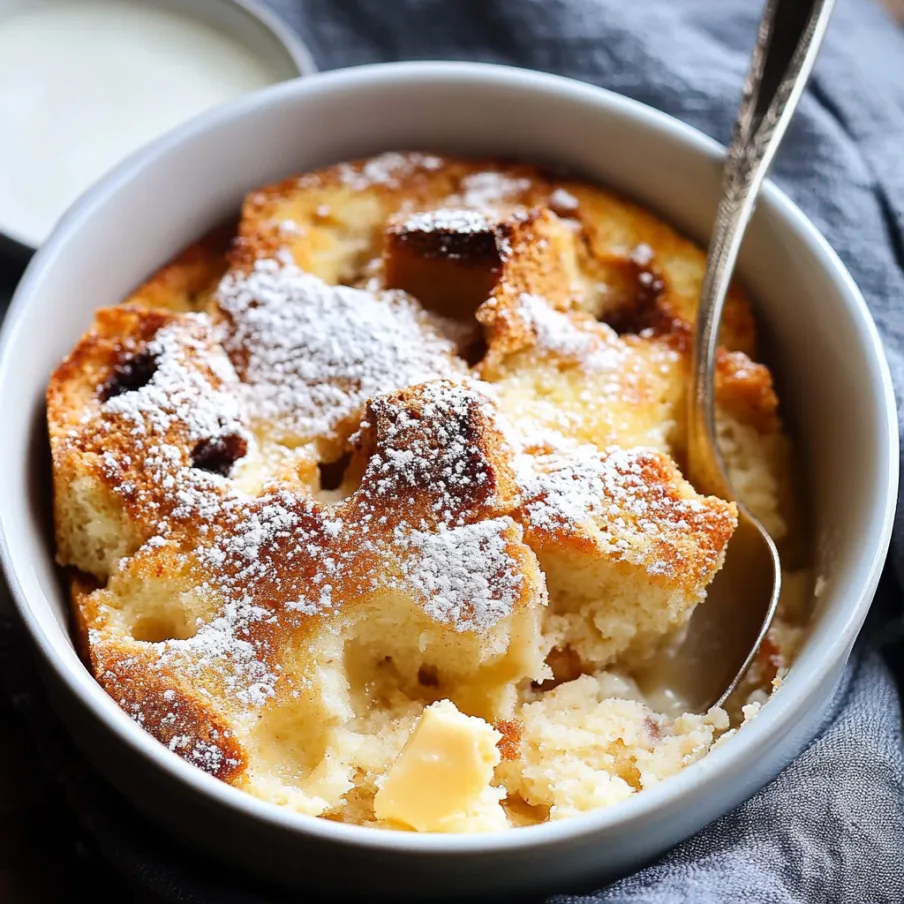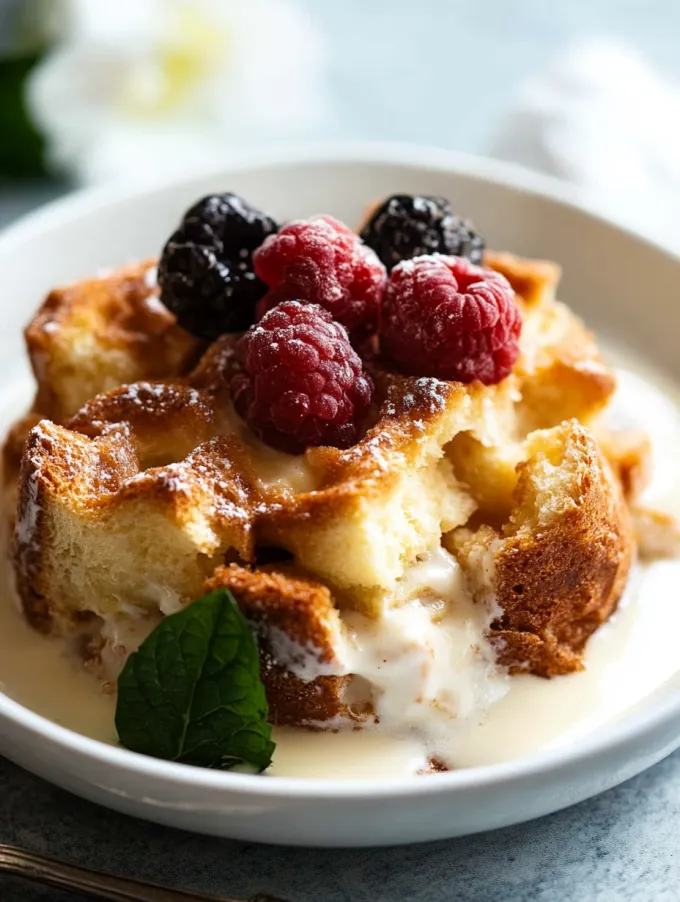 Pin it
Pin it
The perfect Bread and Butter Pudding achieves a delicate balance - a golden, slightly crisp top giving way to a soft, custardy interior that melts in your mouth. This timeless dessert transforms humble, day-old bread into something truly special through the magic of a vanilla-scented custard and gentle baking. Through years of perfecting this recipe, I've found that simple attention to detail elevates this humble dessert from good to unforgettable.
The first time I made this for my family, my grandmother tasted it and quietly told me it was better than her mother's version - the highest compliment possible. The secret was taking the time to properly soak the bread and adding a touch of cinnamon to the custard.
Essential Ingredients and Selection Tips
- Bread: Slightly stale bread absorbs the custard better. White bread creates a classic pudding, while brioche or challah add richness
- Butter: Use real butter, not margarine, for authentic flavor. Salted or unsalted both work well
- Eggs: Large eggs provide structure and richness. Room temperature eggs incorporate better into the custard
- Milk and Cream: The combination creates the perfect richness. For a lighter version, use all milk
- Sugar: White granulated sugar works perfectly, though brown sugar adds a caramel note
- Sultanas or Raisins: Traditional, but optional. Soak in warm water or brandy for added moisture and flavor
- Vanilla Extract: Pure extract makes a noticeable difference in flavor compared to imitation
- Cinnamon: Adds warmth and complexity that complements the custard beautifully
 Pin it
Pin it
Detailed Cooking Instructions
1. Prepare the Perfect Bread Base
- Step 1:
- Cut bread into evenly sized pieces, about 1-inch squares
- Step 2:
- Leave crusts on for textural contrast
- Step 3:
- If bread is very fresh, dry it slightly in a low oven for 10 minutes
- Step 4:
- Butter each piece on one side before arranging in the baking dish
2. Create the Custard Base
- Step 1:
- Warm milk and cream slightly for better incorporation
- Step 2:
- Whisk eggs thoroughly before adding other ingredients
- Step 3:
- Add sugar gradually while whisking to prevent lumps
- Step 4:
- Incorporate vanilla and cinnamon last for maximum flavor
- Step 5:
- Strain custard through a fine mesh sieve for silky texture
3. Master the Soaking Process
- Step 1:
- Pour custard slowly over bread to allow even absorption
- Step 2:
- Press bread gently to help absorption without crushing
- Step 3:
- Let soak for at least 15 minutes, ideally 30
- Step 4:
- Sprinkle additional sugar on top for a caramelized finish
My grandmother taught me that bread pudding was created as a way to use every last bit of food, even stale bread. This practical origin has evolved into something truly special that now appears on the menus of fine restaurants - proof that sometimes the simplest recipes become the most beloved.
Temperature Matters
I've discovered that baking at a moderate temperature (325°F/165°C) allows the custard to set properly without curdling or becoming tough. A water bath provides additional insurance against overheating.
Make-Ahead Magic
This pudding can be fully assembled, covered, and refrigerated overnight before baking. In fact, this extra soaking time often improves the texture, making it perfect for entertaining.
Texture Balance
The key to perfect bread pudding is achieving the right bread-to-custard ratio. Too much custard creates a soggy mess, while too little leaves dry patches. I find that the bread should be fully saturated but still maintain its structure.
Serving Strategy
While delicious warm from the oven, bread pudding develops even more flavor as it cools. I often serve it slightly warm rather than hot, with a pitcher of cold cream or vanilla custard sauce for guests to add as they please.
 Pin it
Pin it
Final Thoughts: This Bread and Butter Pudding represents the beauty of traditional cooking - transforming simple ingredients into something truly special. The combination of crisp, caramelized edges and soft, vanilla-scented interior creates a dessert that's both humble and luxurious. Whether served at a family dinner or special occasion, it never fails to provide that perfect ending to a meal, connecting us to generations of home cooks who understood the magic of simple ingredients prepared with care.
Frequently Asked Questions
- → Can I use different types of bread?
- Yes, you can use any bread including white, whole wheat, raisin bread, hot cross buns, or brioche. Just avoid bread with very strong flavors that might clash with the sweet vanilla custard.
- → My bread is very fresh, not stale. Will that work?
- Yes, fresh bread works fine - just be more gentle when mixing it with the egg mixture so it doesn't turn to mush. Slightly stale bread is preferred as it holds its shape better.
- → Can I make this with just milk instead of cream?
- Absolutely! If using only milk (2 1/2 cups total), add an extra egg (4 total) to ensure the custard sets properly, as milk is thinner than cream.
- → Can I make this ahead of time?
- Yes, you can prepare it ahead and refrigerate for 4-5 days. It reheats beautifully in the microwave and will even maintain its crispy top if made with bread cubes as specified.
- → What are the best toppings to serve with bread and butter pudding?
- Traditional choices include vanilla custard, cream, or ice cream. Other delicious options are chocolate sauce, caramel sauce, or simply a dusting of powdered sugar.
